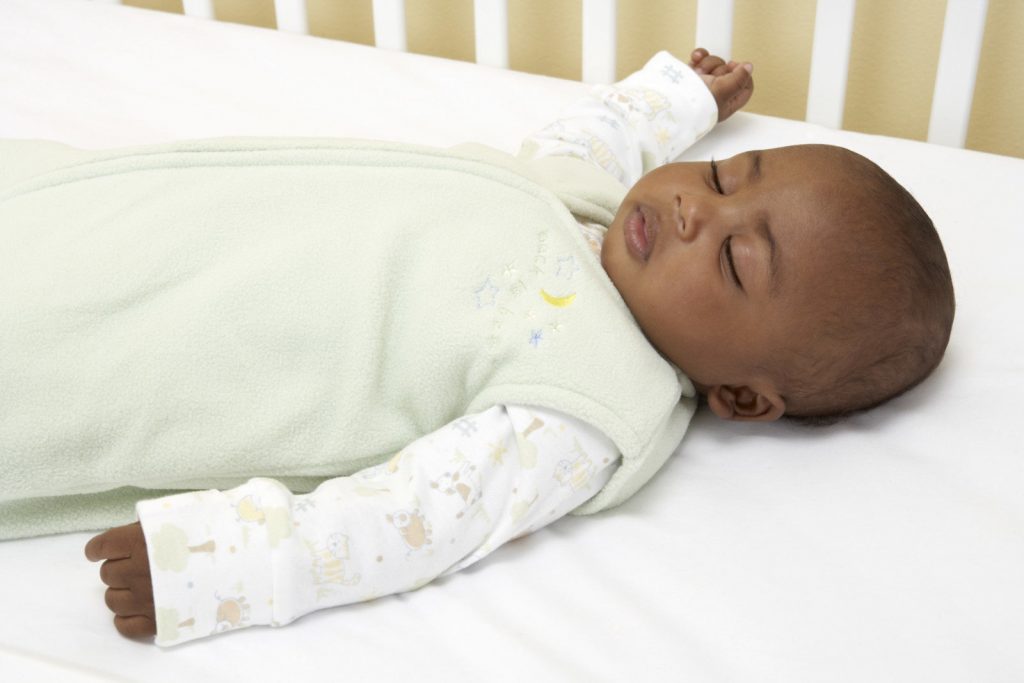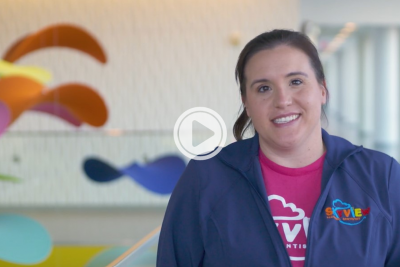As we head into the cold weather months, there are many things to remember when caring for your infant or newborn that are different from the warm weather months. Here are some winter weather tips for home and while you are on the go.
Winter Safety in Your Home
As you turn on your furnace in your home, make sure you have a working carbon monoxide detector on every level of your home, especially near any sleeping area. If you use a space heater, keep any heater at least three feet away from anything that can burn, and always supervise children and pets when space heaters are on. Turn your space heater off every time you leave the room.
Make sure you have a fire escape plan with two ways out, and practice this with your family. Think about designating one person who will be responsible for infants and children in your home and make sure everyone in your family knows the plan.
While it is always fun to snuggle with your baby – either holding them or carrying them in a baby wrap or sling– make sure you put your baby down when handling hot liquids and foods to prevent any spills that may burn your baby.
Protecting Your Babies While They Are Asleep
We always worry about our babies being too cold in winter months, especially while they sleep. Putting extra blankets in the baby’s bed is so tempting, especially the thick, soft, fluffy ones that seem so nice to cuddle. However, extra bedding is very dangerous for babies. Anything loose in the crib can move over your baby’s face and increase the risk of suffocation and SUID (Sudden Unexpected Infant Death, also known as SIDS or Sudden Infant Death Syndrome). Instead, wrap your baby in a swaddle or sleep sack to help them stay warm.
Another item that can wiggle over your baby’s face during sleep is a hat. While we all love the super cute hats that seem to come with every newborn outfit, how often do we see these off the baby once you have put the baby down? This becomes another suffocation risk for your baby. Of course, you can continue to use the hat for awake time, especially for picture time – but your baby does not need a hat on while sleeping, they will stay plenty warm. Remember, overheating is another risk factor for sudden unexpected infant death, and it is just as dangerous for a baby to be too hot as it is for them to be too cold.
Keeping Warm On-the-go
The key to dressing your baby for an outing is layers. You can first start with tighter layers, like leggings and long-sleeved bodysuits (or onesies). Then add a warmer top (like a sweatshirt or long-sleeved shirt) and an additional pair of pants, if needed. Generally, an infant should wear one more layer of clothing than adults while outside. Hats are important for babies if you are going to be outside for any prolonged time.
When you put your infant in their car seat, remove any fluffy layers, like a winter coat. Remember, safety in the car is the top priority. Fluffy layers under the car seat can give you a false sense of proper harness fit but can rapidly deflate or compress in a crash, causing your baby to slip through the harness and out of their car seat. The best way to keep your baby safe is to take off heavy coats and blankets before harnessing them in the car seat.
Car Seat Safety is Key in the Winter
After your baby is harnessed in their car seat, you can tuck a blanket around them (or a backward-facing coat) to cover them up. Be sure to tuck the blanket or coat over the buckled harness straps. Anything used, make sure it is easy to remove so your baby doesn’t get too hot in the car. Remember, overheating is also dangerous for babies. You also want to be sure to leave your baby’s face uncovered to avoid trapping air and suffocation.
If you use a car seat cover, make sure you don’t leave the cover over your baby for long periods of time. Never leave the cover over your baby in the car, and be sure to uncover the baby as soon as possible to avoid air trapping. It is always best to remove a sleeping baby from a car seat once you are at your destination. Babies should always be flat while sleeping, and anything upright is unsafe for infant sleep.
One additional key point about car seats: any item that did not come with your car seat has not been crash-tested. Do not use items that will interfere with harnessing your child or securing the car seat to its base or the vehicle seat.
In Case of an Emergency
You should always have an emergency kit packed and ready in your car. This can be crucial if winter weather leaves you stranded. An emergency car kit should include extra blankets, clothing, and non-perishable snacks (peanut butter, crackers, cereal bars, baby food, etc).
In case of a medical emergency with a child, determine where the nearest accredited, Level I pediatric trauma center is located. St. Louis Children’s Hospital has six pediatric E.R. locations across the St. Louis and southern Illinois region. These include St. Louis Children’s Hospital, Children’s Hospital at Memorial Hospital Belleville, Children’s Hospital at Memorial Hospital Shiloh, Children’s Hospital at Missouri Baptist Medical Center, Children’s Hospital at Northwest HealthCare, and Children’s Hospital at Progress West Hospital.
Winter is a wonderful time of the year. Hopefully, these tips will help you keep your baby safe!






Comments